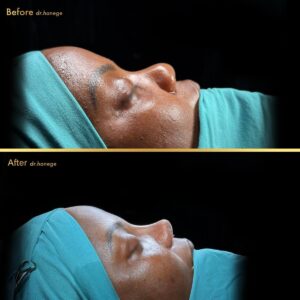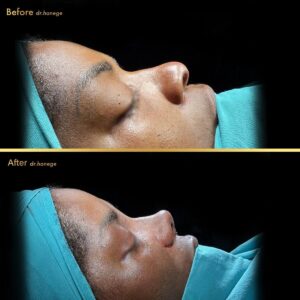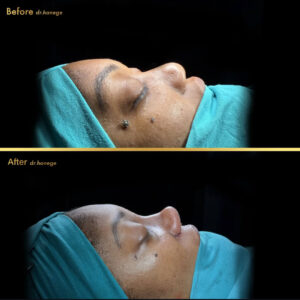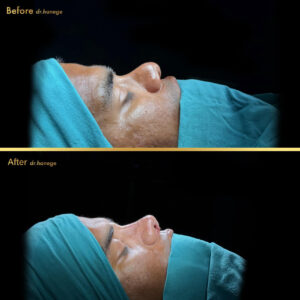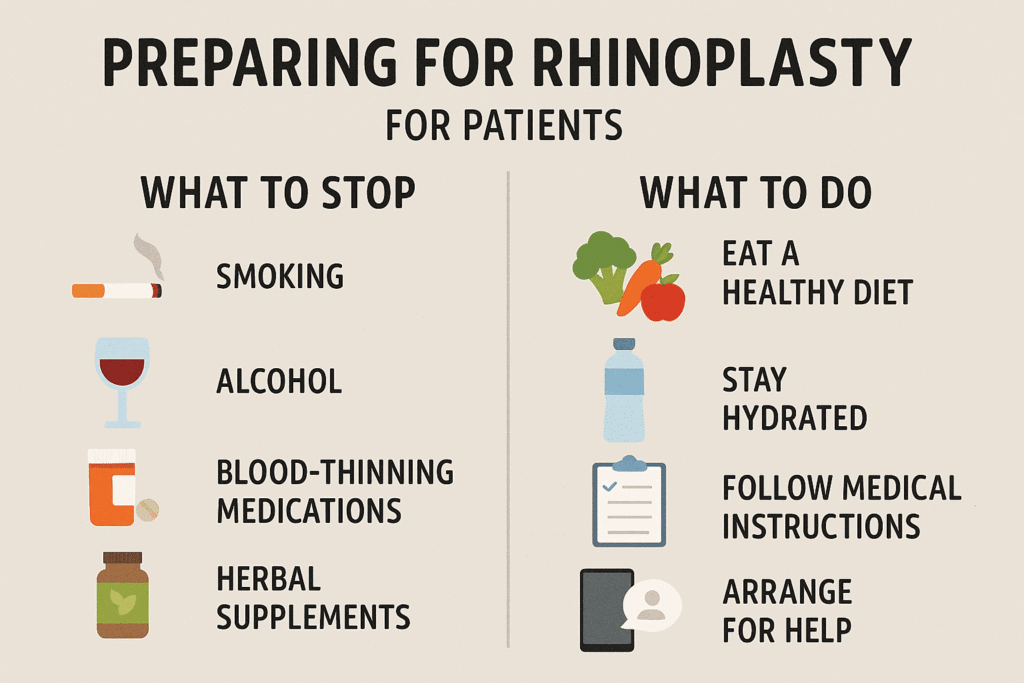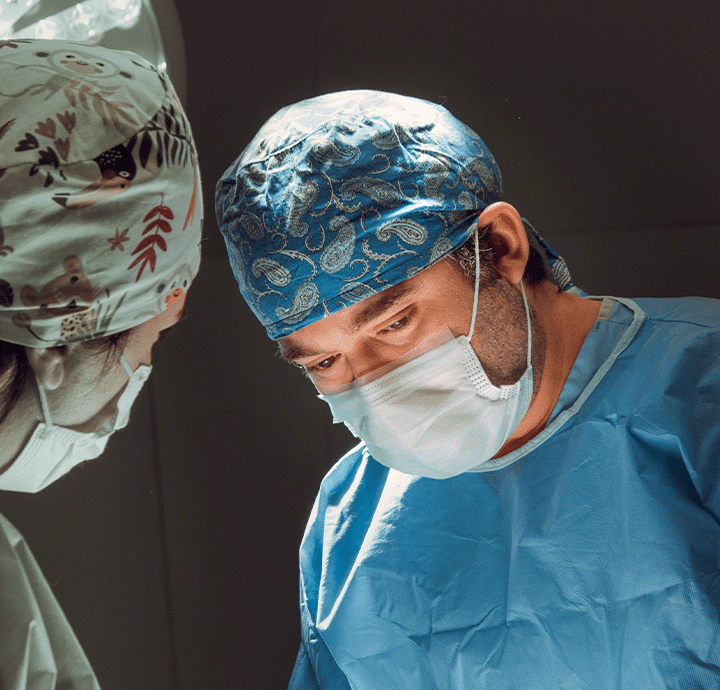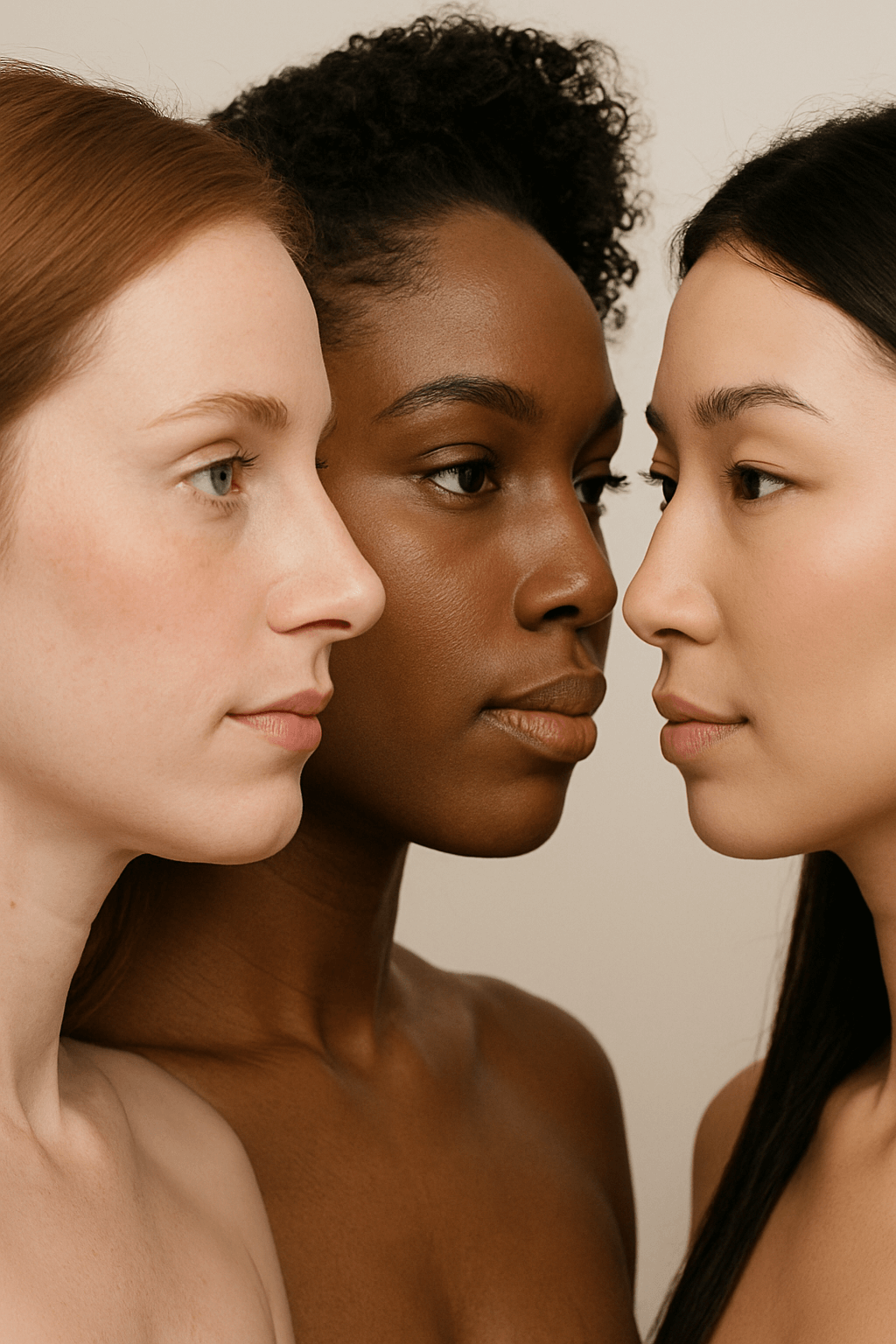
Ethnic Rhinoplasty: The Definitive Guide for International Patients (Featuring Dr. Fatih Mehmet Hanege, Istanbul)
Ethnic Rhinoplasty enhances nasal harmony while preserving cultural and ethnic identity. It is a philosophy supported by structural technique, careful planning, and respect for diversity. This guide focuses on Istanbul’s expertise—especially the practice of Dr. Fatih Mehmet Hanege, an ENT and Ethnic Rhinoplasty Surgeon—covering consultation, technique, revision, recovery, price, and aftercare. All timelines are general; your healing is individual. Always follow your own surgeon’s instructions.
What Makes Ethnic Rhinoplasty Different?
Traditional rhinoplasty often assumed a narrow range of nasal shapes. Ethnic Rhinoplasty must be fluent across many anatomies. Four variables drive the plan: skin thickness, cartilage strength, radix/dorsum height, and nasal base width. In practice, this means combining precise reduction with targeted augmentation and, above all, building a stable framework so the skin can drape and refine naturally over time.
- Skin thickness & texture: Thick or sebaceous tip skin softens definition and prolongs swelling; thin skin reveals small irregularities—plans must reflect this.
- Cartilage strength & shape: Softer alar cartilages collapse if over-reduced; structural support and sutures protect shape and airflow.
- Radix & dorsum: Low radix/flat dorsum (some Asian/African anatomies) benefit from augmentation; dorsal humps (many Middle Eastern/Mediterranean cases) require precise reshaping.
- Base width & alar flare: Alar base reduction can refine width/flaring but must remain conservative and symmetric to avoid an “operated” look or compromised breathing.
The unifying principle is structure: preserve where possible, reinforce where needed. When structure is right, results look natural and last.
Meet the Surgeon: Dr. Fatih Mehmet Hanege (ENT & Ethnic Rhinoplasty Specialist Surgeon)
Patients seeking Ethnic Rhinoplasty Istanbul frequently choose Dr. Hanege for his ENT foundation, identity-preserving aesthetic, and disciplined structural technique.
- Septoplasty in every case: As an ENT specialist, he corrects deviated septum/valves while improving form. Septoplasty also provides the most desirable graft source: septal cartilage.
- Cartilage preference: Septal first; rib cartilage when more strength/volume is required (especially in revisions). Ear cartilage is not preferred due to limited long-term structural reliability.
- Identity-preserving design: The goal is refinement—not replacement—so your result looks authentic for your face and heritage.
- Preservation mindset: He favors maneuvers that maintain elegant dorsal lines and minimize unnecessary trauma.
- Realistic timelines & communication: Thick skin refines slowly; augmentation needs support; tips evolve month by month. Expectations are set clearly and supported by structured follow-up.
Have questions? Contact our English-speaking patient coordinator any time before or after surgery. Proactive communication speeds reassurance and problem-solving.
Tip: Send clear, well-lit photos from the front, 45° angles, and profile for the most accurate feedback.
Why Istanbul and Turkey Lead in Ethnic Rhinoplasty
- High case volume → refined judgment: Daily exposure to diverse anatomies sharpens intraoperative decision-making—vital for ethnic and revision cases.
- Medical infrastructure for travelers: Accredited hospitals, modern ORs, reliable anesthesia, and multilingual teams streamline the journey.
- Value without compromise: The Ethnic Rhinoplasty price in Turkey is typically far lower than in the US/UK for comparable expertise and facilities. Packages often include surgery, hospital, early follow-ups, and optional hotel/transfers.
Pro tip: Never choose by price alone. Choose portfolios, philosophy, communication, and hospital standards.
Ethnic Anatomies in Detail (And How Technique Adapts)
African & Afro-Caribbean
Common features: thick sebaceous tip skin, low radix, flatter dorsum, soft alar cartilage, wider base with alar flare.
- Subtle radix/dorsum augmentation with septal/rib cartilage for elegant profile lines.
- Structured tip support for definition that shows as swelling settles.
- Conservative, symmetric alar base reduction when indicated.
- Valve protection to preserve/improve airflow.
East & Southeast Asian
Common features: low radix, shorter projection, rounder/wider tip; skin thickness varies by individual/region.
- Radix augmentation for balanced profile.
- Tip grafts and sutures for natural definition.
- Careful base narrowing only if truly indicated.
South Asian
Heterogeneous features—some with dorsal humps and droopy tips; others with flatter dorsum. Skin thickness and cartilage strength vary.
- Precise hump smoothing (avoid over-reduction).
- Radix augmentation when low.
- Tip support to define through thicker skin.
Middle Eastern / Mediterranean
Common features: dorsal hump, strong bridge, sometimes downward rotation or over-projection at the tip; skin thickness moderate to thick.
- Refine hump while preserving elegant brow-tip lines.
- Careful tip rotation/refinement without over-narrowing.
- Valve reinforcement to protect breathing.
Hispanic / Latin
Frequently broader base and variable dorsum; cartilage and skin characteristics vary by heritage.
- Base adjustments when indicated, with symmetry checks.
- Tip refinement/support for natural definition.
- Targeted augmentation for radix/dorsum balance where needed.
Across all groups: over-resection risks collapse and functional issues. Supportive frameworks age better.
Consultation: How Plans Are Made with Dr. Hanege
- Proportion analysis: multi-angle photos; chin-lip-nose balance; nostril symmetry; radix position; tip projection/rotation.
- Airway evaluation: septum, turbinates, valves. Septoplasty is integrated to correct function and supply septal cartilage.
- Tissue & structure: skin thickness, cartilage quality, prior surgeries/scar patterns (critical for revisions).
- Goal setting: define what to refine and what to preserve; understand the why behind each change.
- Timeline & risk: thick skin refines slowly; augmentation needs support; base changes are conservative—expect a month-by-month roadmap.
- Communication: how to contact the team, what to send, and the follow-up schedule (see Communication & Follow-Up).
Preparing for Ethnic Rhinoplasty
- Medication & supplements: with your physician’s guidance, stop blood-thinning drugs/supplements that increase bleeding risk; disclose everything you take.
- Lifestyle: no nicotine; limit alcohol; prioritize sleep and hydration.
- Nutrition: proteins, leafy greens, vitamin C, zinc; reduce excess salt.
- Logistics: confirm hotel/transport (or package details) and a support person for the first 24 hours.
- Mindset: expect swelling, daily asymmetry, and a slow reveal—especially in thicker skin; patience is part of the protocol.
Only adjust medications with explicit approval from your surgeon/physician.
Ethnic Rhinoplasty Technique: How Natural Results Are Engineered
Open vs. Closed Technique
Open approach (small columellar incision) provides direct visualization and precision—valuable for ethnic/revision cases that need tip support and base control. The delicate scar typically fades well. Closed approach is reserved for limited maneuvers.
Dorsal Strategy
- Hump refinement: conservative, smooth, and proportional—avoid overscooping.
- Dorsal preservation: maintain natural brow-tip lines when appropriate.
- Augmentation: low radix/flat dorsum gains subtle height with septal/rib cartilage, sculpted to look seamless.
Tip Support & Definition
Thick skin hides detail if the tip is weak. Structural sutures and grafts create definition that emerges naturally as swelling subsides—crisp yet not sharp, refined yet not pinched.
Alar Base Management
Markings and measurements ensure symmetry. Alar base reduction refines width/flare only when truly indicated, preserving natural expression and protecting airflow.
Valve & Airway Protection
Internal and external valves must be preserved or reinforced. A beautiful nose that does not breathe is not a success.
Cartilage Grafts (Dr. Hanege’s Preferences)
- Septal cartilage: first choice for strength/straightness; harvested via routine septoplasty.
- Rib cartilage: used when greater volume or rigidity is required (especially in revision ethnic rhinoplasty); offers durable support when shaped precisely.
- Ear cartilage: not preferred in this practice due to softness and limited long-term structural reliability for ethnic definition.
Revision Ethnic Rhinoplasty: When a Previous Surgery Needs Correction
Revision cases are uniquely demanding due to scar tissue (which alters dissection and mobility), depleted cartilage (septal may be spent), and weakened frameworks from over-resection (risking droop, pinching, asymmetry, and breathing issues).
Dr. Hanege’s approach: reassess airway and structure; integrate septoplasty to correct function and harvest available septal cartilage; rebuild with strength—most often using rib cartilage when septal supply is insufficient; and set a realistic, longer timeline for swelling and refinement. Even difficult revisions can achieve stable, natural results in experienced hands.
Ethnic Rhinoplasty Recovery: Day by Day, Week by Week, to Two Years
Everyone heals differently. Use this as orientation, not a promise. Your surgeon’s instructions always come first.
Days 1–3: Peak
Swelling/bruising most visible; cast/splint protects the nose; breathing may feel restricted by packing or swelling. Sleep elevated on two pillows or a neck pillow; use cold compresses around the eyes as instructed (never on the nose). Emotional dips are common—remember the appearance is dominated by swelling.
Days 4–7: The Turn
Discomfort eases; breathing improves gradually; asymmetry fluctuations are normal. Continue hydration, modest salt intake, and rest. Avoid alcohol/smoking.
Day 5–10: Cast Removal & Lift in Spirits
When the cast is removed (per plan), confidence improves even though swelling persists—especially at the tip. Light desk work and gentle walking are possible; avoid heavy lifting and protect the nose from bumps.
Weeks 2–4: Early Normalcy
Bruising fades; swelling recedes steadily with day-to-day variations. Many return to work/school around days 10–14. Use high-SPF sunscreen; avoid heat/sun exposure; no contact sports or intense gym sessions yet; hold off on heavy glasses unless cleared.
Months 1–3: Visible Progress
Most swelling resolves by month three; the tip refines slowly (especially with thicker skin). Breathing typically improves significantly after septoplasty. Positive feedback from others is common, but patience remains essential.
Months 3–6: Stability
Bridge lines look cleaner; tip definition evolves gradually. The tiny open-approach scar softens/fades. With surgeon approval, most patients resume full physical activity. Confidence grows alongside the nose’s calmer look.
Months 6–12: Refinement
The final contour becomes clearer, particularly at the tip. Skin adapts to the new structure; definition looks less puffy and more settled. Many feel fully adjusted by now.
Year 1–2: Final Maturation
Especially in thick-skinned or revision cases, the most refined definition appears between 12–24 months. This long tail is normal physiology; by now, framework stability and naturalness are evident.
- Within the first week: daily or every-other-day updates (front, both 45° angles, profile).
- 4 weeks (1 month): standardized photos for early evaluation.
- 3 months: assessment of structure, symmetry, and breathing.
- 6 months: mid-term refinement review.
- 12 months: long-term contour and function check.
- 18–24 months: final maturation review (as needed for thick skin or revisions).
Good light and neutral background improve assessment quality. The coordinator will confirm the exact views and secure submission method.
Nutrition, Supplements & Smart Avoidances
- Supportive foods: lean proteins (repair), leafy greens (micronutrients), citrus/berries (vitamin C), zinc-rich foods; hydrate well; keep salt modest.
- Supplements: only with surgeon approval; some (e.g., ginkgo, ginseng, high-dose fish oil) may increase bleeding risk.
- Avoid: nicotine/vaping; recreational drugs; alcohol in the early phase; unapproved NSAIDs/herbals that thin blood.
Ethnic Rhinoplasty Price in Turkey (and Abroad)
Indicative primary-case ranges (complexity varies by anatomy and technique):
- Turkey (Istanbul): ~€4,000–€7,000
- United States: ~€12,000–€18,000
- United Kingdom: ~€10,000–€14,000
- Germany: ~€8,000–€12,000
- South Korea: ~€6,000–€10,000
What drives cost: surgeon’s expertise; primary vs. revision; graft needs (septal/rib); OR category/time; anesthesia; materials; in-hospital care; follow-ups during your Istanbul stay.
Packages & logistics: Many Istanbul clinics offer optional bundles (airport transfers, hotel, coordinator). Ask for a transparent breakdown of what’s surgical vs. travel logistics.
Choose by portfolio fit, philosophy, and communication—not strictly by price.
How to Choose the Right Ethnic Rhinoplasty Surgeon
- Relevant portfolio: before/afters with noses like yours (skin thickness, base width, radix, tip support).
- Philosophy: identity-preserving design; structure over shortcuts; valve protection.
- Function first: discussion of breathing, valves, and septum as standard (not optional).
- Graft strategy: septal or rib cartilage for strength and longevity (as in Dr. Hanege’s practice); ear cartilage not preferred.
- Communication & aftercare: proactive messaging, photo checks, and responsiveness after you return home.
- Facility quality: accredited OR, reliable anesthesia protocols, clear emergency pathways.
- Useful reviews: look for comments about function, naturalness, and aftercare—not only quick praise.
Red flags: template noses; over-promising (“final result in two weeks”); price-only pitches; no functional plan; vague aftercare.
FAQs: Ethnic Rhinoplasty with Dr. Hanege
Will Ethnic Rhinoplasty erase my ethnic features?
No. The goal is refinement with identity preserved—balance, proportion, and natural function.
Is ethnic rhinoplasty more complex?
It can be—skin, cartilage, radix, and base differences require structural support and conservative planning.
Which cartilage does Dr. Hanege use?
He prefers septal cartilage first; for greater strength/volume—especially in revisions—he uses rib cartilage. He does not prefer ear cartilage for long-term structural reliability.
Does he perform septoplasty?
Yes—in every case. As an ENT specialist, he integrates septoplasty to improve function and to harvest septal cartilage for support.
How long does recovery take?
Initial recovery is 1–2 weeks; major swelling drops by ~3 months; final refinement (especially with thick skin or revisions) appears over 12–24 months.
What is the ethnic rhinoplasty price in Turkey?
Primary cases in Istanbul typically range ~€4,000–€7,000, depending on complexity, hospital category, anesthesia, and grafting needs.
How does remote follow-up work?
Patients should proactively send photos/videos: frequently in week 1, then at 4 weeks, 3 months, 6 months, 12 months, and 18–24 months if needed. The team replies with tailored guidance.
Conclusion: Why Patients Choose Dr. Hanege for Ethnic Rhinoplasty in Istanbul
Ethnic Rhinoplasty succeeds when identity, structure, and proportion align. It demands a surgeon who avoids templates, protects breathing, and builds long-term stability. International patients choose Istanbul—and Dr. Fatih Mehmet Hanege—for an ENT-driven, identity-preserving approach that favors support over shortcuts and communication over assumptions.
- ENT foundation: septoplasty in every case for function and grafts.
- Graft strategy: septal first; rib for robust augmentation (ear cartilage not preferred).
- Identity-preserving design: no cookie-cutter noses.
- Structural technique: valves protected; results that age well.
- Proactive aftercare: patients should contact the team freely; scheduled photo/video follow-ups at 1 week, 4 weeks, 3 months, 6 months, 12 months, and 18–24 months where indicated.
Ready to discuss your case? Contact our English-speaking patient coordinator to share photos and goals, and to receive a tailored plan from Dr. Hanege.



